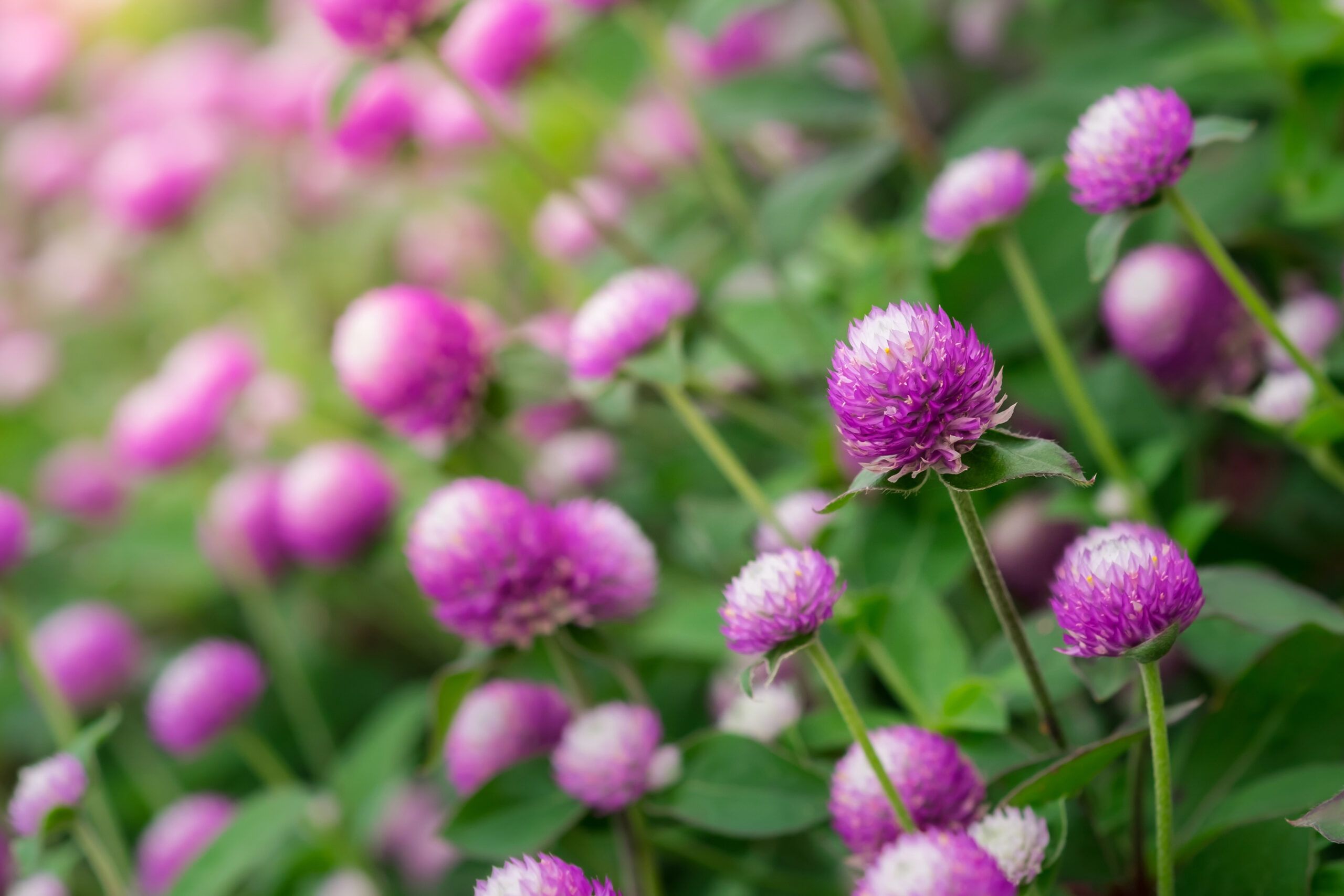We may be compensated if you purchase through links on our website. Our team is committed to delivering honest, objective, and independent reviews on home products and services.
A well-designed garden should include some striking foliage, fall color, and winter structure. But let’s face it, gardening for most homeowners is about one thing: Flowers.
In this guide, we’ll walk through a handful of our favorite summer flowering plants. They’ll churn out blooms for weeks on end this summer—so much that you can harvest armloads to fill vases or give away, and still have plenty left to enjoy in your garden beds long past Labor Day.
Flowers That Bloom All Summer
When selecting flowers for your garden, choose varieties that offer long-lasting color. Below are some top picks for flowers that bloom throughout the summer.
Perennial Hibiscus (H. moscheutos)
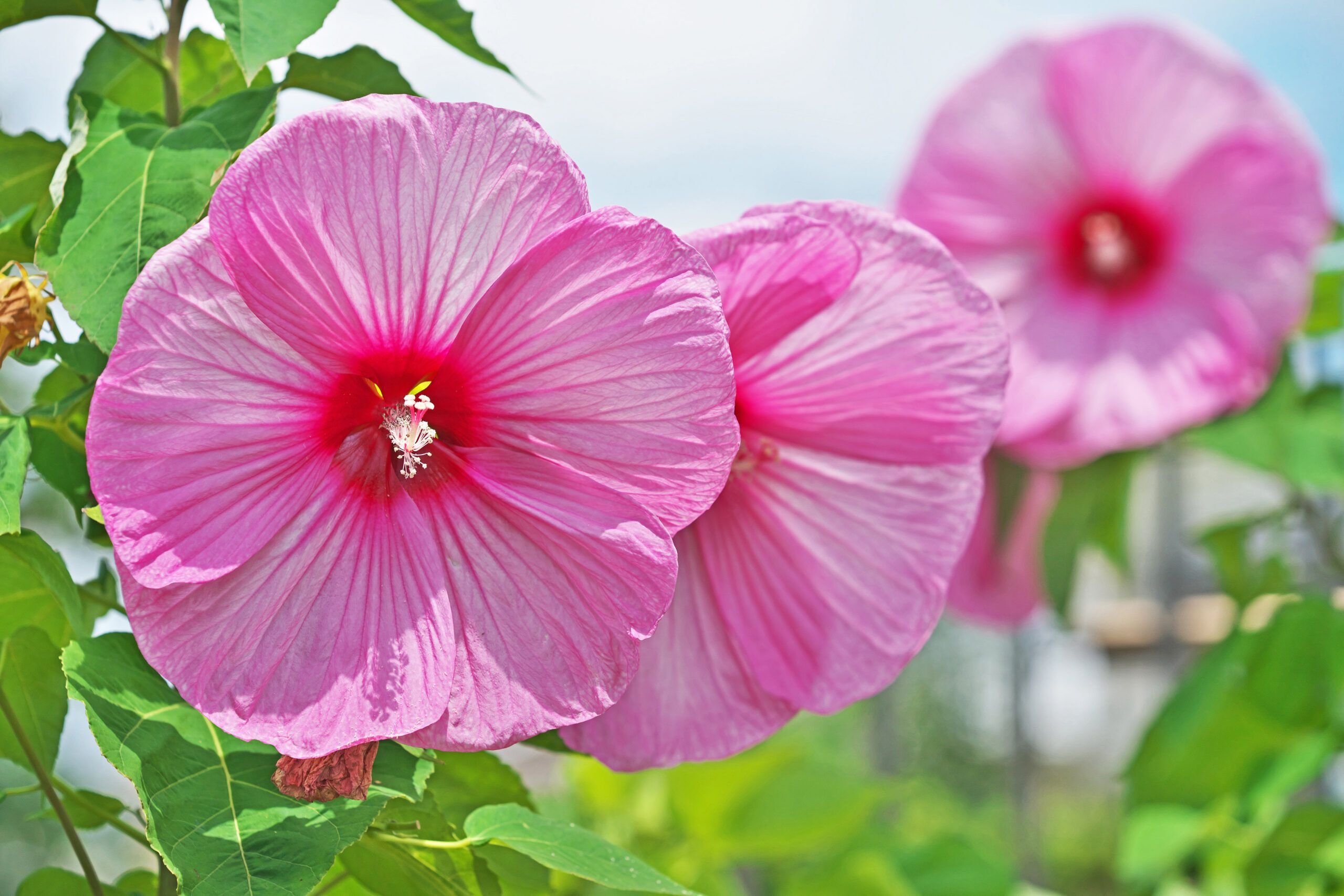
Perennial hibiscus, also known as rose-mallow or swamp hibiscus, is a garden centerpiece bred from native wildflowers of the East and South. These plants produce enormous flowers that can reach up to a foot in diameter, blooming in shades of red, pink, or white. The stems vary in height from 2 to 8 feet, depending on the variety. Flowers bloom from late spring until the first frost, and its vibrant colors and large petals create a tropical feel.
Care: Perennial hibiscus thrives in full sun and requires regular to abundant watering. It grows as a perennial in USDA hardiness zones 5-10. The stems die back to the ground each winter, but the plant returns in the spring.
Purple Wave Petunia (Petunia F1 ‘Wave Purple’)
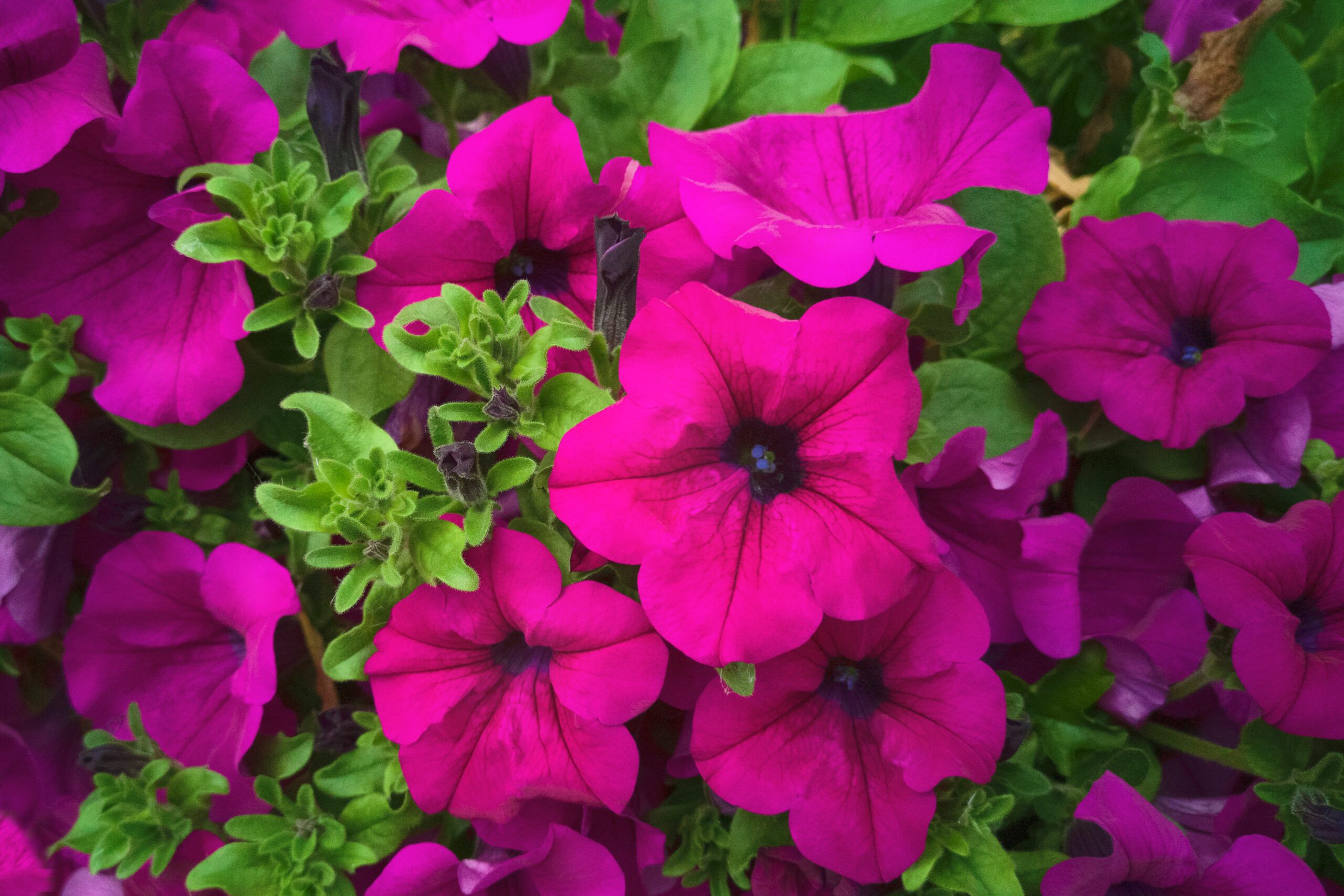
The Purple Wave petunia revolutionized gardeners’ perception of petunias after being named an All-America Selection winner in 1995. Unlike traditional upright petunias, this hybrid variety grows more like a vine, making it a good option for hanging baskets, cascading over retaining walls, or even as a colorful ground cover.
Its trailing habit enables the flowers to spill over containers and walls, providing a lush, cascading effect. You can also use petunias in combination planters, window boxes, or flower beds throughout the season.
Care: Purple Wave petunias require full sun and regular watering. They grow as annuals in all zones and provide vibrant color throughout the summer months.
Profusion Zinnias (Z. hybrida)
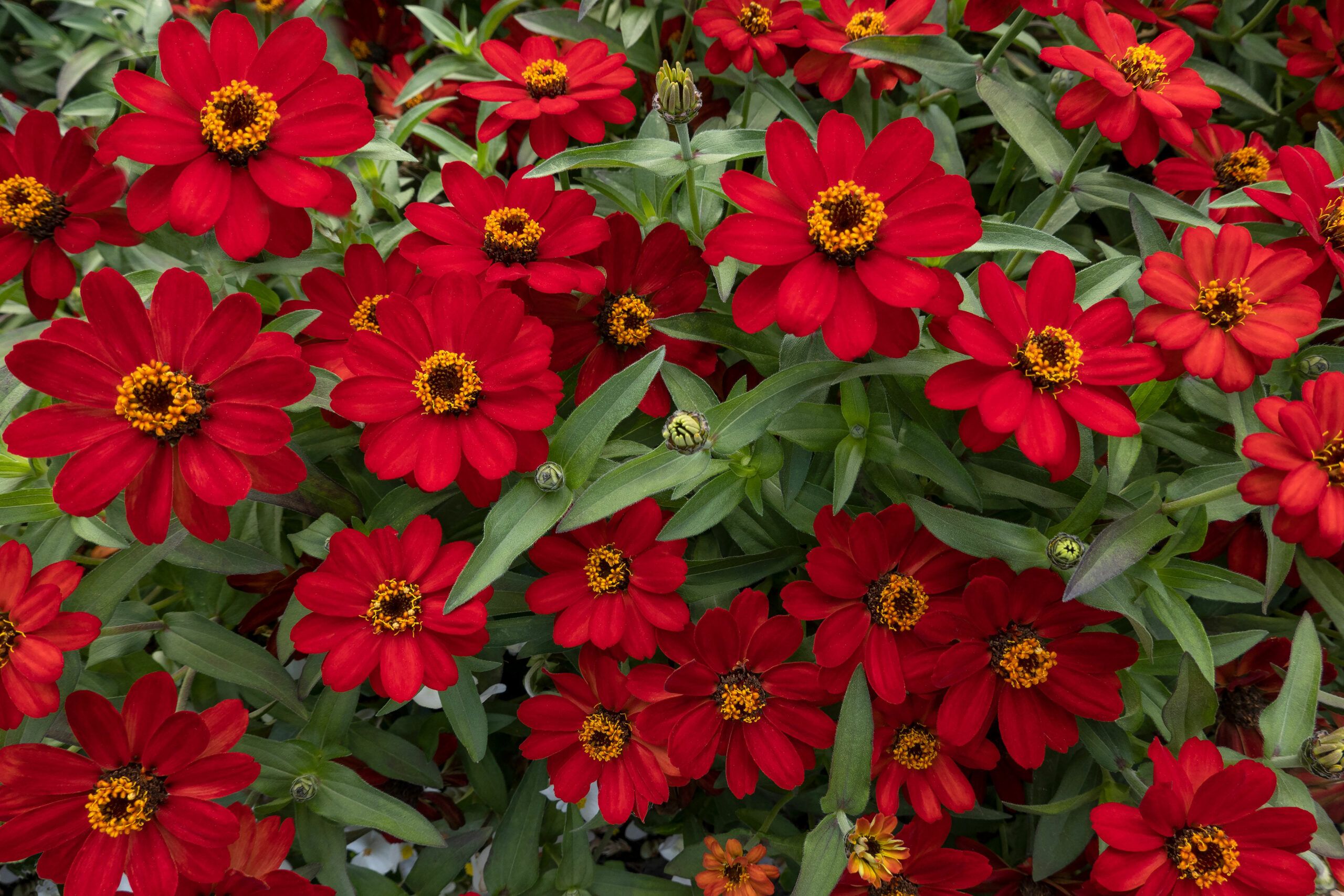
Zinnias offer an abundance of blooms for both garden display and cut flower arrangements. The Profusion series, in particular, stands out for its ability to flower continuously from summer well into fall, regardless of weather conditions.
Profusion zinnias come in various colors, including white, orange, and cherry, each having won multiple garden awards. For those who prefer a fuller flower, double Profusion varieties are available in cherry, gold, white, and “fire” (an eye-catching orange-red).
In addition to their vibrant hues, these zinnias are resistant to common diseases. They are also excellent for pollinator gardens, attracting butterflies and bees with their bright, cheerful blooms.
Care: These heat-loving plants thrive in full sun and need regular watering. They grow as annuals in all zones, making them a versatile choice for gardens nationwide.
Globe Amaranth (Gomphrena globosa)
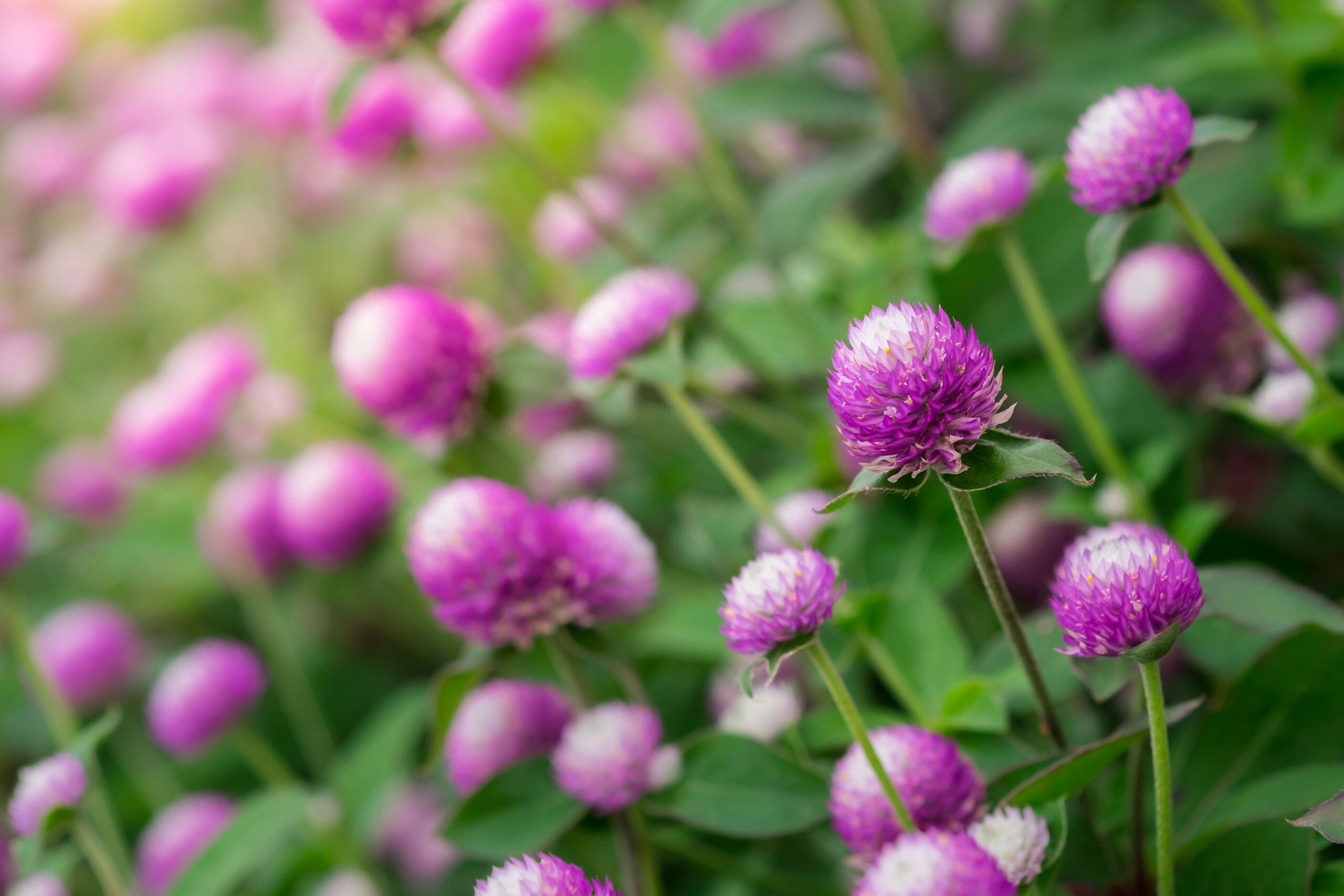
Globe amaranth are versatile flowers with clover-like heads. They are long-lasting in the garden and make excellent cut flowers for fresh bouquets. They’re also easy to dry for winter arrangements.
Available in white, red, pink, lilac, or purple, globe amaranth adds a pop of color to any garden. Two standout varieties include “Strawberry Fields” with its bright red blossoms and “All Around Purple” for a rich, deep hue.
Whether used in mixed flower beds or as stand-alone features, these flowers create a fascinating texture that stands out against more traditional blooms. Their ability to thrive in hotter climates makes them a steadfast choice for summer gardens.
Care: Globe amaranth grows best in full sun to partial shade and requires moderate watering. It’s grown as an annual in all zones.
Sea Holly (Eryngium)

If you want to add drama and contrast to your garden or floral arrangements, consider sea holly. This striking plant resembles thistle but offers a unique blue-green coloration that blends beautifully with its prickly leaves, often streaked with silver.
Different varieties of sea holly offer various shades and forms. Alpine sea holly (E. alpinum) presents a deep steel blue, while E. amethystinum leans towards a silvery blue. For a truly dramatic effect, consider “Miss Willmott’s Ghost” (E. giganteum), which produces impressive conical flowers surrounded by silvery, spiky bracts.
These plants are also highly drought-tolerant once established, making them a solid choice for low-water gardens and xeriscaping. Their distinctive appearance shines both in the garden and in floral designs, where their architectural look adds a touch of elegance and modernity.
Care: Sea holly requires full sun and moderate to regular watering. It grows as a perennial in zones 3-8, adding architectural interest to gardens year after year.
Stella de Oro Daylily (Hermerocallis)
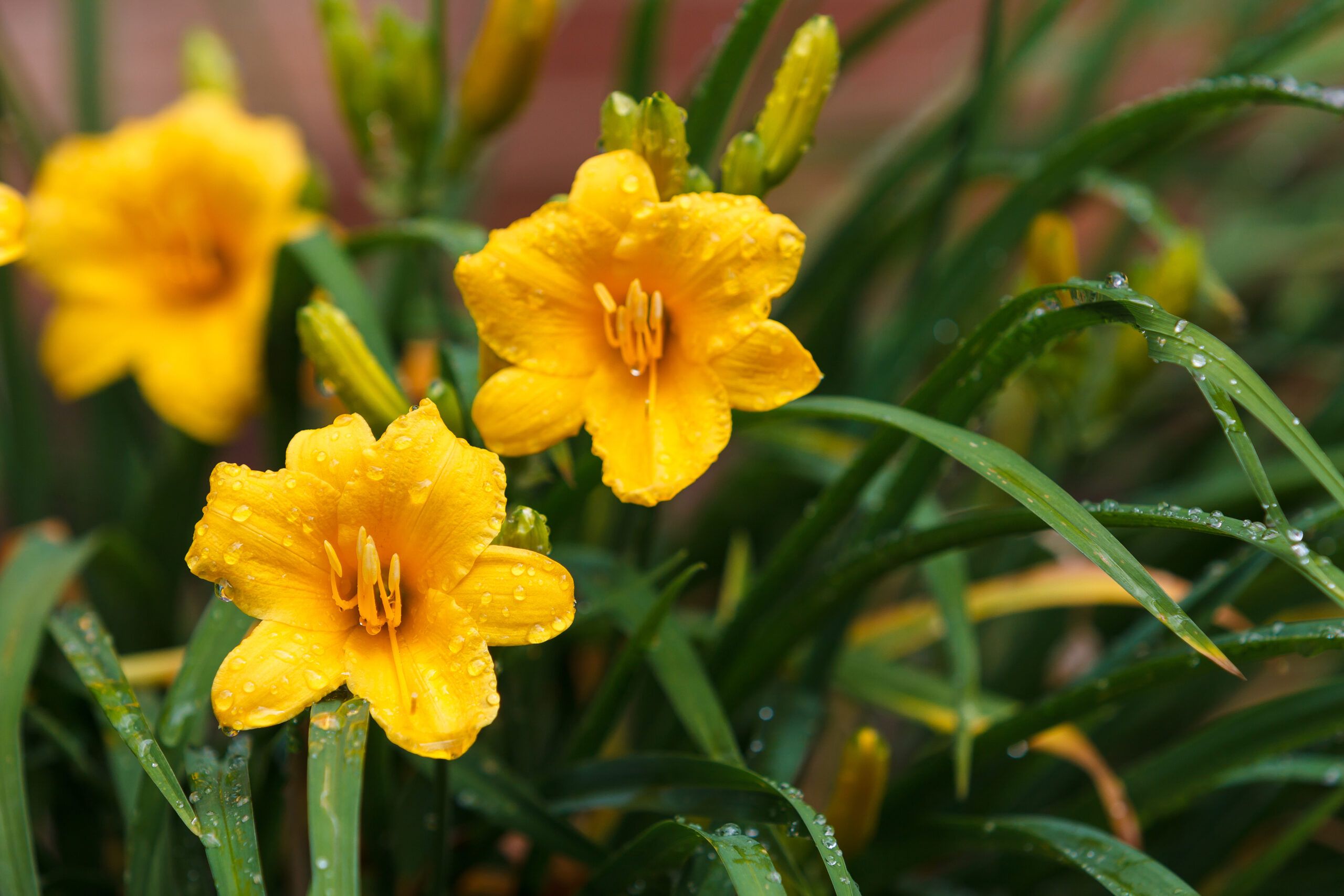
Known for their toughness and trouble-free nature, daylilies produce showy flowers above a mound of sword-shaped leaves. While each individual flower lasts only a day, the plants continually produce new buds over a long blooming period.
The Stella de Oro variety is particularly noteworthy for its extended blooming season, producing golden-yellow blossoms for up to five months–far longer than most daylilies. This low-growing variety is a good option for borders or mass plantings.
Beyond its striking color and form, Stella de Oro is easy to care for. It tolerates a range of soil conditions and continues to bloom even in less-than-ideal weather.
Care: Stella de Oro daylilies thrive in full sun to light shade and require regular watering. They grow as perennials in zones 3-9, offering reliable color year after year.
Evergreen Candytuft (Iberis sempervirens)
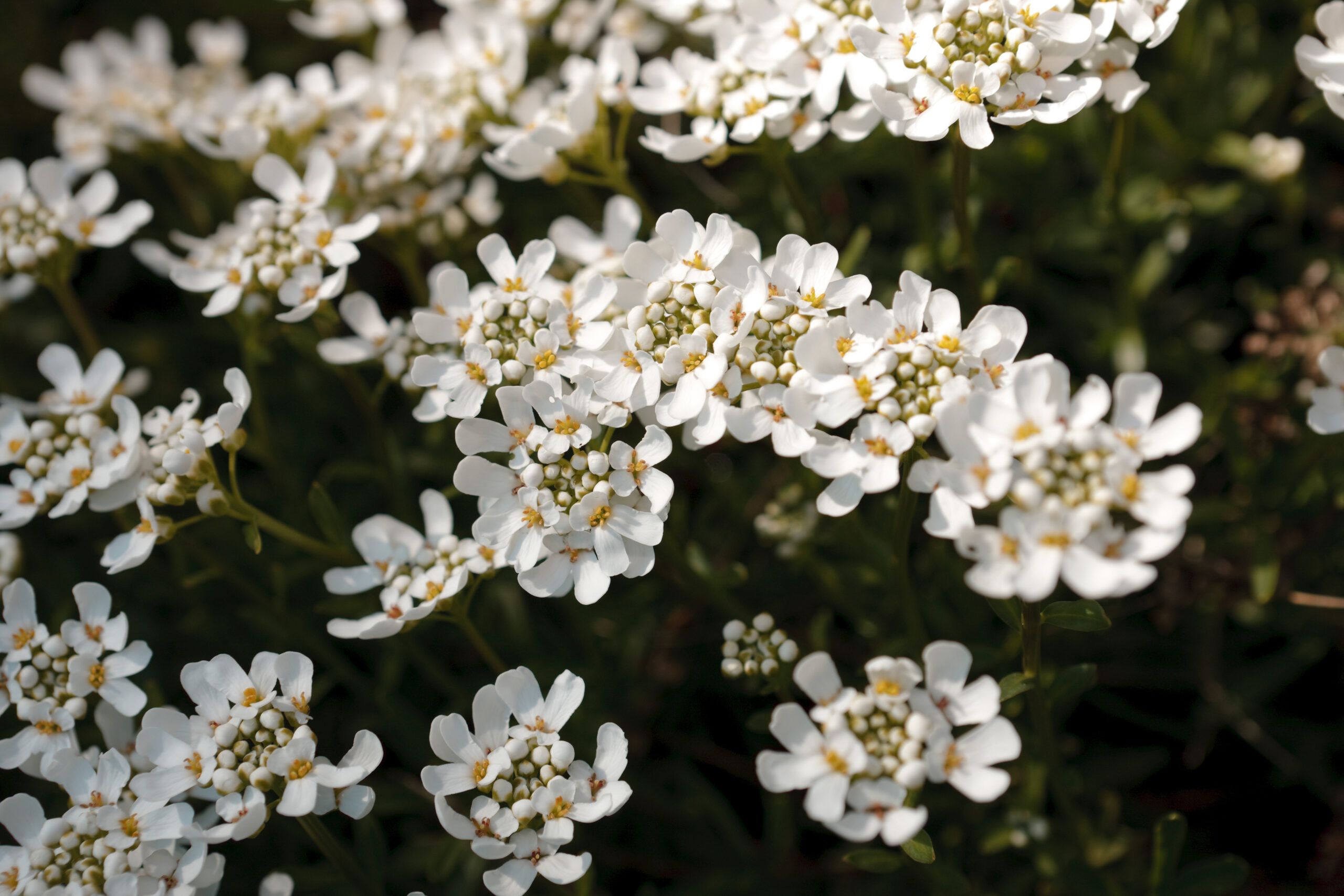
Evergreen candytuft is a versatile plant that offers both delicate flowers and year-round foliage interest. In spring, small clusters of white flowers appear in low-growing clumps, continuing to bloom into the fall. The plant’s shiny, dark-green leaves persist through winter and stand out in the garden even when not in bloom. Its compact growth habit makes it perfect for edging, rock gardens, and ground cover.
Care: This plant prefers full sun to partial shade and requires regular watering. It grows as a perennial in zones 5-9, making it a reliable choice for many gardens.
Brown-Eyed Susan (Rudbeckia)

Gardeners love brown-eyed Susans for their cheerful, daisy-like flowers, which feature brilliant yellow or orange petals surrounding a raised brown center. These flowers stand out beautifully in perennial borders and in fresh-cut bouquets.
While some varieties of Rudbeckia, such as R. hirta, are grown as annuals (blooming from seed in the first year), others are perennial, gradually forming showy, spreading clumps. One notable perennial variety to look for is R. fulgida var. sullivantii ‘Goldsturm,’ known for its particularly abundant flowers.
These adaptable plants are resistant to rabbits and deer, which makes them a great choice for gardens prone to these pests.
Care: Brown-eyed Susans require full sun and moderate to regular watering. Depending on the variety, they can be grown as annuals or perennials in all zones.
Joe Pye Weed (Eupatorium species)

Despite its somewhat unappealing name, Joe Pye weed is a stunning native wildflower that attracts both butterflies and birds to the garden. The “Gateway” variety (E. maculatum) has wine-red stems that reach 5 to 7 feet tall, topped with dusky rose flower clusters up to a foot across.
This plant works well as a tall anchor in perennial beds or as a temporary screen. In winter, the stems die back to the ground, so plan your garden design accordingly.
Joe Pye weed grows robustly in wet meadows and ditches. As a wildflower, it can lend a natural, untamed look to garden settings while providing essential nectar to pollinators.
Care: Joe Pye weed thrives in full sun and requires average to abundant water. It grows as a perennial in zones 4-8.
Purple Coneflower (Echinacea purpurea)

Purple coneflower is a hardy and low-maintenance perennial that produces large, daisy-like flowers from mid-summer into autumn. The blooms, typically pink to purple and about four inches across, attract butterflies and work well as cut flowers.
One standout variety is “PowWow Wild Berry,” recognized for its vibrant rosy pink flowers. After several years, you can divide coneflower clumps to create new plants, allowing you to expand your garden or share with friends.
This perennial is adaptable to various soil types and conditions. Even inexperienced gardeners find success with these plants, as they establish easily and require little maintenance beyond occasional watering and dividing.
Care: Purple coneflower prefers full sun and is adaptable to various soil conditions. It grows as a perennial in zones 3-9.
Sunflowers (Helianthus annuus)
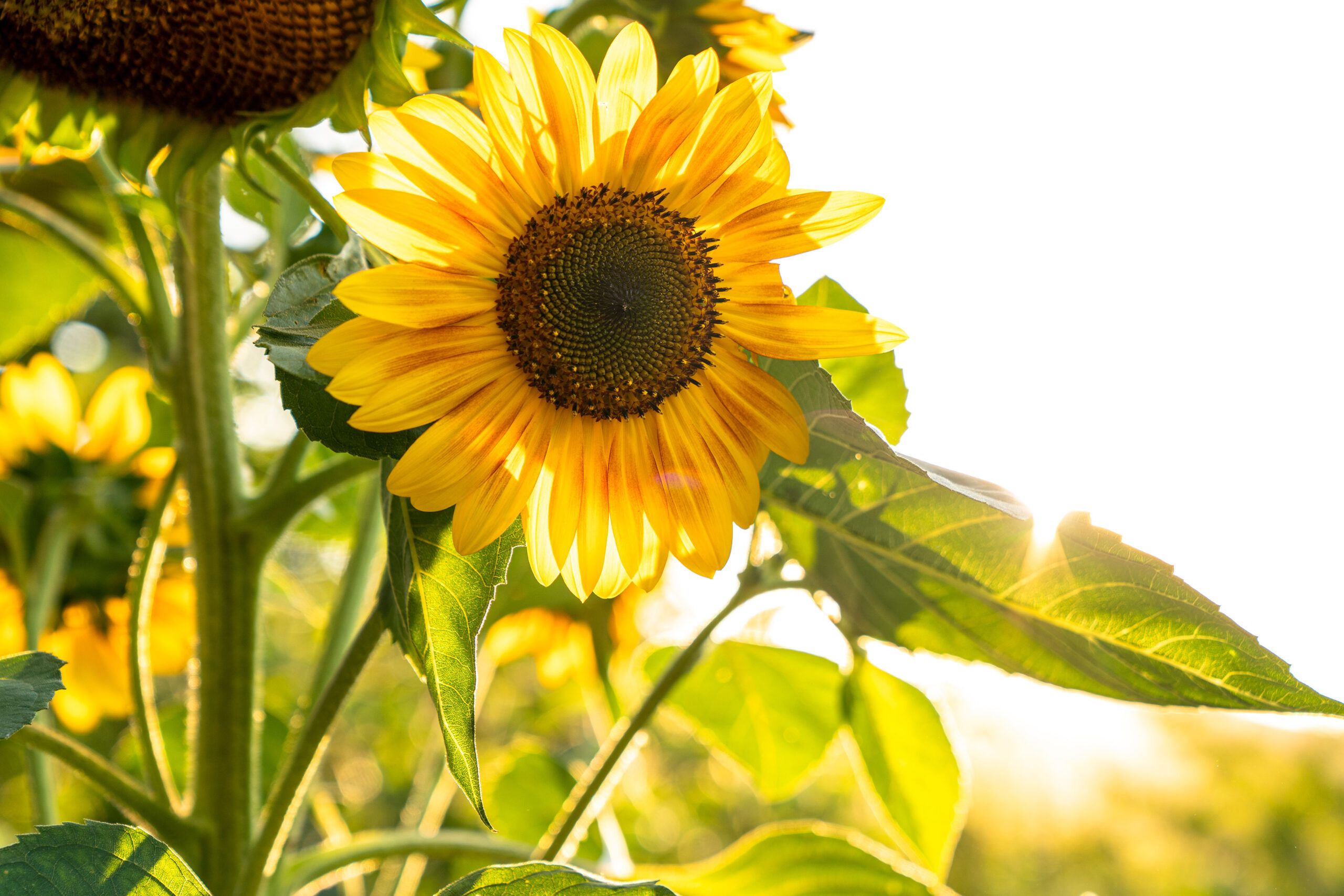
Sunflowers are a garden favorite, beloved for their large, cheerful blooms and easy-to-grow nature. Due to their large, easy-to-plant seeds and impressive growth, they particularly work well when gardening with children.
Classic varieties such as “Mammoth Russian” and “Russian Giant” can reach heights of 10-15 feet, producing enormous plate-sized flowers with edible seeds. For smaller gardens or cut flower production, consider shorter varieties such as “Ring of Fire” (4-5 feet tall with 5-inch flowers) or “Sunspot” (just 2 feet tall). “Indian Blanket” is a branching variety that produces numerous smaller flowers ideal for cutting.
Sunflowers also attract pollinators and birds, contributing to a healthy garden ecosystem. Their imposing stature and bright yellow petals add a sense of height and dramatic flair to garden landscapes.
Care: Sunflowers require full sun and regular watering. Most varieties grow as annuals in all zones. Sunflower blooms face the sun, so choose a bed where the sun will be behind you when viewing the flowers.
Marigolds (Tagetes)
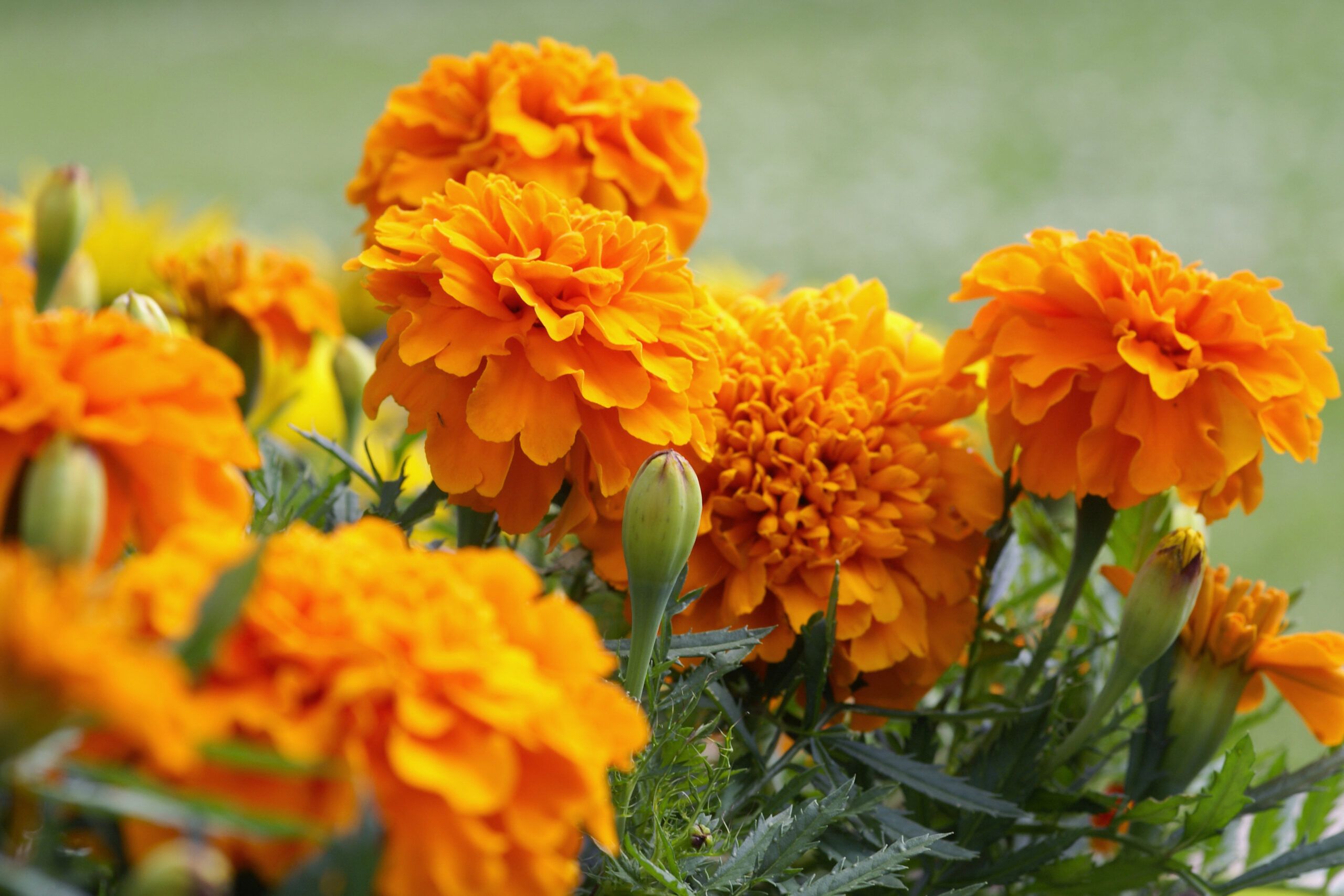
Marigolds are a staple in many gardens, prized for their bright yellow or orange flowers that add a cheerful pop of color to beds and borders. These flowers not only brighten up the garden but also serve a practical purpose as their distinctive scent can help deter pests.
For a show-stopping display, consider “Moonsong Deep Orange,” a hybrid variety that features frilly, densely packed flowers that create a striking visual impact. If you prefer a more daisy-like appearance, many marigold varieties feature just a row or two of petals around a dark center.
Beyond their vibrant appearance and pest-repelling properties, marigolds are incredibly easy to grow from seeds, making them ideal for beginner gardeners. They thrive in various soil types and continue to bloom profusely with minimal care.
Care: Marigolds thrive in full sun and require regular watering. They grow as annuals in all zones.
Our Conclusion
Before selecting vibrant summer flowers for your garden, consider factors such as sun exposure, watering needs, and your specific climate zone. Thoughtful flower selection can lead to a more beautiful, resilient, and enjoyable summer garden, and each plant also contributes to a healthy, lively garden ecosystem.
